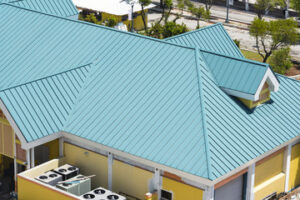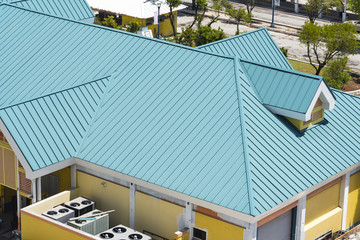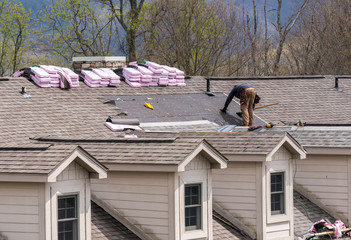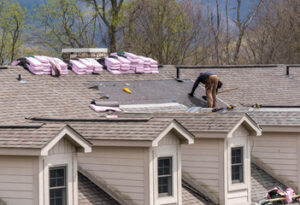Roof Installation Riverview is a significant undertaking that impacts the safety, efficiency and value of your home. To ensure a smooth process, prepare your house and driveway by parking vehicles away, covering landscaping with tarps, and temporarily moving items like mirrors and breakable wall decorations.
Contractors also install new drip edge and flashing (made of galvanized steel) in places like around vents, chimneys and roof valleys to prevent water penetration . They may also add features such as ridge vents and gutter systems.
. They may also add features such as ridge vents and gutter systems.
The type of roofing material you choose has a major impact on the look, longevity, and energy efficiency of your roof. You’ll need to choose a material that fits your climate, your home’s architectural style, and your budget.
The substrate, or foundation, of your roof is what supports the roofing material and helps it withstand rain, snow, heat, and cold. It’s important to choose a quality substrate that is strong enough to support the weight of the roofing material and prevent moisture infiltration.
Wood substrates, like OSB (oriented strand board) and plywood, are common choices. They’re strong, lightweight, and affordable. They’re also moisture-resistant and work well with most shingle types.
Concrete is another common substrate, and it’s used on flat or low-sloped roofs. It’s fire-resistant and can withstand the weight of a lot of roofing materials, including metal. However, it’s not ideal for a homeowner with a tight budget as it’s more expensive and requires extensive labor to install.
After the substrate is prepared, a waterproof underlayment is laid to protect the roof against moisture infiltration. It’s typically rolled out horizontally across the roof and secured with nails. It’s also installed in the eaves, valleys, and around penetrations like chimneys, vents, and TV satellite dishes. In addition, ice and water shield is often applied in the eaves, valleys, around chimneys, and along the walls to help prevent ice dams and leaks.
Shingles are an important roofing component that provides a finished look to a home’s exterior. They’re available in a wide range of colors and styles to suit any architectural style. Popular asphalt shingles include 3-tab shingles that are economical and fit well with most home styles, as well as dimensional and premium shingles that provide the look of other roofing materials like slate or cedar shakes.
Other roofing materials like standing seam metal or cedar shakes are more expensive, but they offer a more unique and attractive aesthetic. They’re also long-lasting and more durable than traditional shingle roofs.
Planning
Regardless of whether you’re building a new house or replacing the roof on an existing home, a comprehensive approach to the installation process is essential to ensuring durable and successful results. It’s important to choose a contractor that has extensive experience and knowledge of local building codes, roofing materials, and climate conditions. It’s also advisable to review the company’s track record and references before signing a contract. A well-drafted agreement outlines the scope of work, estimated costs, and timelines for completion.
Before the actual work begins, a professional will conduct a thorough inspection of the existing roof to assess its condition and identify any potential problems that need to be addressed. This includes inspecting the integrity of the structure, checking for leaks, and examining the condition of shingles or tiles. The inspector may also use tools such as infrared cameras to detect hidden moisture or a drone for an aerial view.
The next step is to install an underlayment, which provides an extra layer of protection against moisture and enhances the durability of the roof. This material is typically made of felt or a synthetic option, and it’s installed by cutting a slot along the ridge and securing it with nails. Additionally, flashing is installed to prevent water from getting into vulnerable areas such as around chimneys or vents.
Once the underlayment and flashing are in place, the main roof is laid. This is the element that’s most visible to the homeowner, and it’s done with care and precision. For asphalt shingles, the shingles are staggered and nailed in. For metal roofs, the panels are screwed into place. A top-notch roofer will ensure that the seams are properly overlapped to prevent leaks and that all nail heads are covered.
Finally, proper ventilation is installed to help regulate temperature and lower cooling demands. Attic vents such as ridge vents, turbines, and soffit vents are installed in strategic locations to promote airflow. Additionally, overhanging branches are trimmed to minimize the risk of damage during storms and high winds. Proper ventilation also helps reduce energy bills and protects against mold and mildew growth.
Inspection
As a part of the installation process, a roofing professional will conduct a comprehensive inspection. This ensures that all aspects of the roof are up to standards, from the quality of the materials to the precision of the installation. The inspection will also cover any areas that need repair or replacement, allowing the homeowner to address them promptly before they become bigger problems.
During the inspection, the roofing professional will look at the condition of the shingles, underlayment, and flashing. They will also check for any sagging or bending, which could indicate structural damage to the roof. In addition, they will examine the eaves, attic, and all supporting structures to make sure they are in good condition.
The inspection will also include checking the ventilation system. This is an important step because it helps to reduce moisture build-up, which can lead to mold and rot. The roof ventilation system may include ridge vents, turbines, powered exhaust or gable vents, and solar fans. The inspection will also include examining the attic for any signs of leaking, such as water stains on the ceiling or insulation that appears damp.
If any issues are identified, the roofing contractor will provide a detailed report of the findings. This will include recommendations for repair or replacement, as well as cost estimates. The report will also include suggestions for preventive measures that can help to extend the lifespan of the roof. For example, regular cleaning of gutters and the removal of overhanging branches can significantly reduce the risk of wear and tear.
Having a properly installed and maintained roof will not only add value to your home, it will also help you avoid expensive repairs or even major replacements in the future. For this reason, it is a good idea to schedule regular inspections by a qualified roofing contractor. Not only will this help you avoid costly repairs in the future, it will also allow you to plan your budget more effectively and avoid unpleasant surprises.
Installation
It is important to understand that roof installation requires a more extensive process than simply adding shingles over an existing structure. This is because a new roofing system should include the proper underlayment, flashing details, and attic ventilation to ensure long-term performance and compliance with local building codes. Moreover, attic ventilation and insulation are essential to the overall comfort of the living environment in a home and prevent moisture buildup that can lead to mold growth, wood damage, and other structural issues. Moreover, they can also regulate indoor temperature and reduce energy consumption by minimizing heat loss in the winter and heat gain in the summer.



